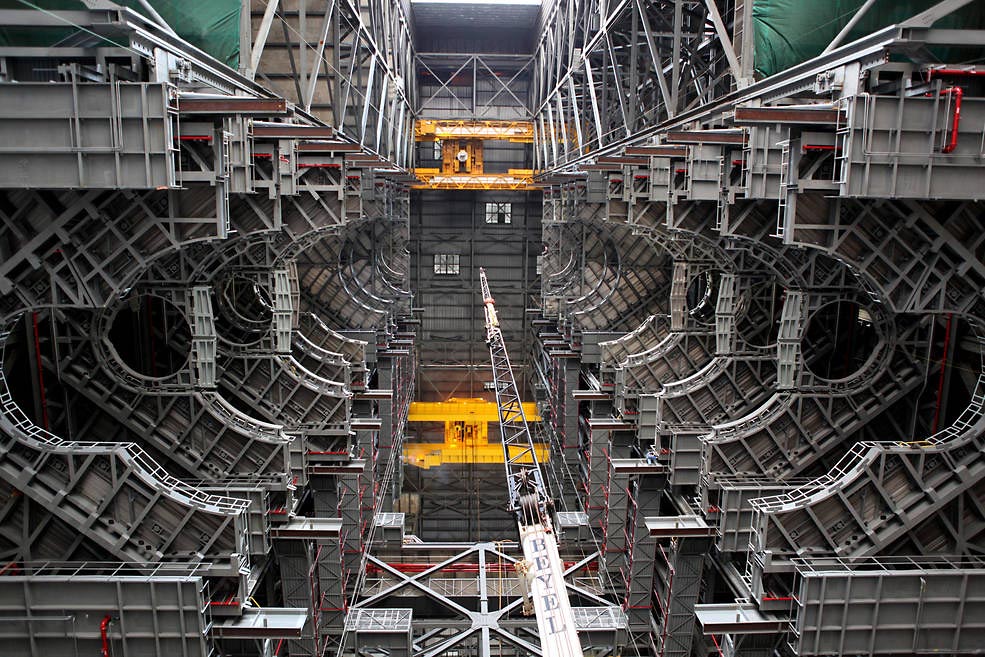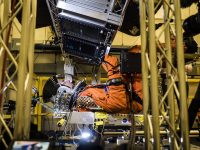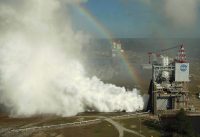High up in the Vehicle Assembly Building at NASA’s Kennedy Space Center in Florida, an overhead crane lowers the final work platform, A north, into place for installation in High Bay 3 on Jan. 12, 2017. (NASA/Frank Michaux)
Home High up in the Vehicle Assembly Building at NASA’s Kennedy Space Center in Florida, an overhead crane lowers the final work platform, A north, into place for installation in High Bay 3 on Jan. 12, 2017. (NASA/Frank Michaux) High up in the Vehicle Assembly Building at NASA's Kennedy Space Center in Florida, an overhead crane lowers the final work platform, A north, into place for installation in High Bay 3 on Jan. 12, 2017. (NASA/Frank Michaux)




